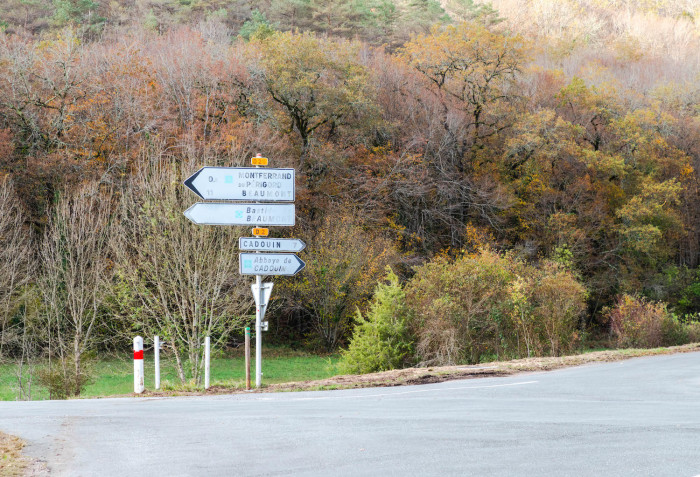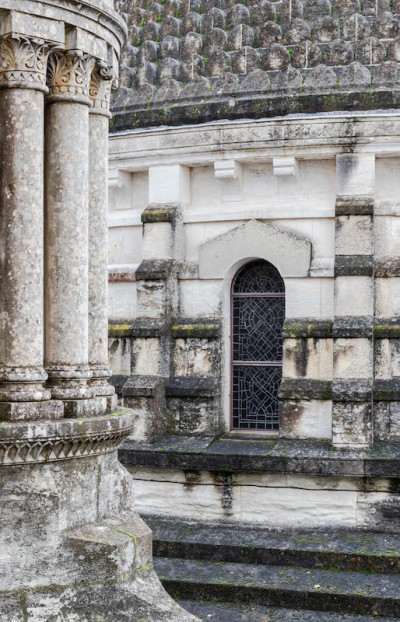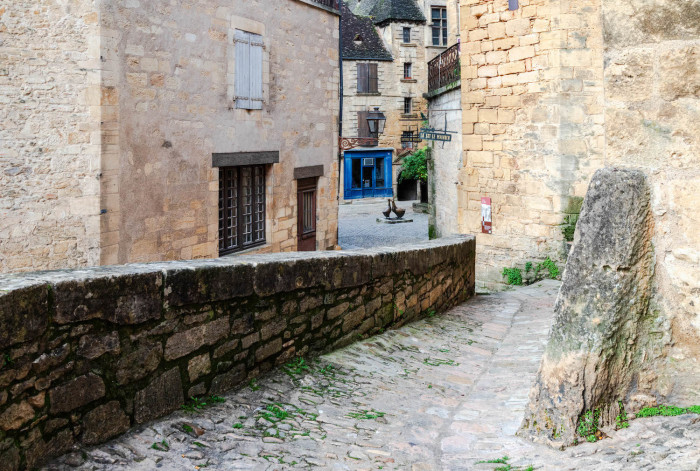Travel: Postcard from France’s Dordogne

The Dordogne might just be the best-kept secret in France.
The region, historically known as Perigord, is located in the southwest, not far from Bordeaux and its universally known wine country.
The wines, as with just about everything else here, are overlooked by most of the tourists who visit France, though there is a significant community of British expats with second homes. Brits coming here is hardly new, as this was once a battleground in the Hundred Years’ War.
As I found out during a recent visit, the Dordogne offers visitors everything they want to see and do in the Old World.
For me, it was history and heritage. For others, the appeal may be quaint countryside towns and villages, the hundreds of chateaus and castles, or the outstanding gastronomy scene. (Foie gras is a specialty.)
I stayed at Domaine de Rochebois, a chateau-turned-five-star hotel.
While one could easily spend their whole stay playing golf or enjoying other amenities and services — especially the spa in colder months of the year — the location makes it a perfect base to discover Dordogne.
About 45 miles from the hotel is Perigueux.

The region’s major city is also the see of the Roman Catholic Diocese of Perigueux and Sarlat, which has had a line of bishops since St. Front in the early centuries of the undivided church. Perigueux’s cityscape is dominated by the aptly named Cathedral of St. Front.
The cathedral’s architecture is instantly familiar to anyone who has seen the monumental Basilica of the Sacred Heart (Sacre-Coeur) in Paris. Inspired by a mix of Byzantine and Romanesque styles, the docent leading my tour said Paul Abadie, the architect responsible for its rebuilding in the 19th century, also drew inspiration from the Hagia Sophia, the former cathedral-turned-mosque in Constantinople or present-day Istanbul. The resulting work guided Abadie’s later design of Sacre-Coeur.
Not far away is Le Petrocore, a must-visit restaurant owned and operated by a young couple. The food is regional, the quality outstanding and the prices more than fair.
Walk off the meal by going to the Vesunna Gallo-Roman Museum, which has an extensive collection of artifacts and ruins dating back about 2,000 years to when this was a provincial Roman outpost. The history contained within the collection is very approachable for someone without a lot of knowledge about the Roman era.
Back closer to the hotel is Sarlat-la-Caneda with its medieval old town — a postcard-perfect streetscape that owes its survival to an early 1960s historic preservation law that saved it from postwar modernity.

As with Perigueux, there is a prominent centuries-old cathedral. In this case, it is dedicated to St. Sacerdos of Limoges, an abbot and bishop in the late seventh and early eighth centuries whose relics were destroyed by Protestants in the Wars of Religion. What you see today is predominantly Romanesque with some flamboyant Gothic.
Sarlat is best explored on a Saturday, when you can walk the quaint cobblestone streets and engage in endless people watching during the weekly market. And for the Instagram set, there’s a photo opportunity around every corner.
Of all the old churches and cathedrals in Dordogne none is more spectacular than Cadouin Abbey in Le Buisson-de-Cadouin.

Dating to its establishment early in the 12th century, the abbey’s Cistercian community lasted until the tumult of the French Revolution. The west front, which faces an outdoor market hall from the 15th century, features bold Romanesque arches. While mostly devoid of decoration some of the arches have elaborate zig-zag patterns.
The flamboyant Gothic cloister is mostly original to the 15th and 16th centuries. Carvings depicting various biblical and monastic scenes are everywhere along the four walkways. One can even sit in the one-time abbot’s chair.
Most visitors in the not-too-distant past came to Cadouin on pilgrimages to see a relic that was believed to be the Holy Shroud. Eventually, the linen cloth, acquired by crusaders, was proven a fake in the 1930s when ancient Arabic inscriptions were discovered on it.
If you go
Late spring or early summer and the shoulder season after Labor Day and into late October are really the best times to go. Not only will you beat the crowds, but the weather is pleasant.
Given its location, a rental car is a must. The roads in France are fine, although some of the narrower countryside roads can be intimidating for some motorists used to American highways.
Airports in Bordeaux or Toulouse are reachable from most major U.S. airports with just a single connection in Paris.
Dennis Lennox writes a travel column for The Christian Post.
Dennis Lennox writes about travel, politics and religious affairs. He has been published in the Financial Times, Independent, The Detroit News, Toronto Sun and other publications. Follow @dennislennox on Twitter.




























